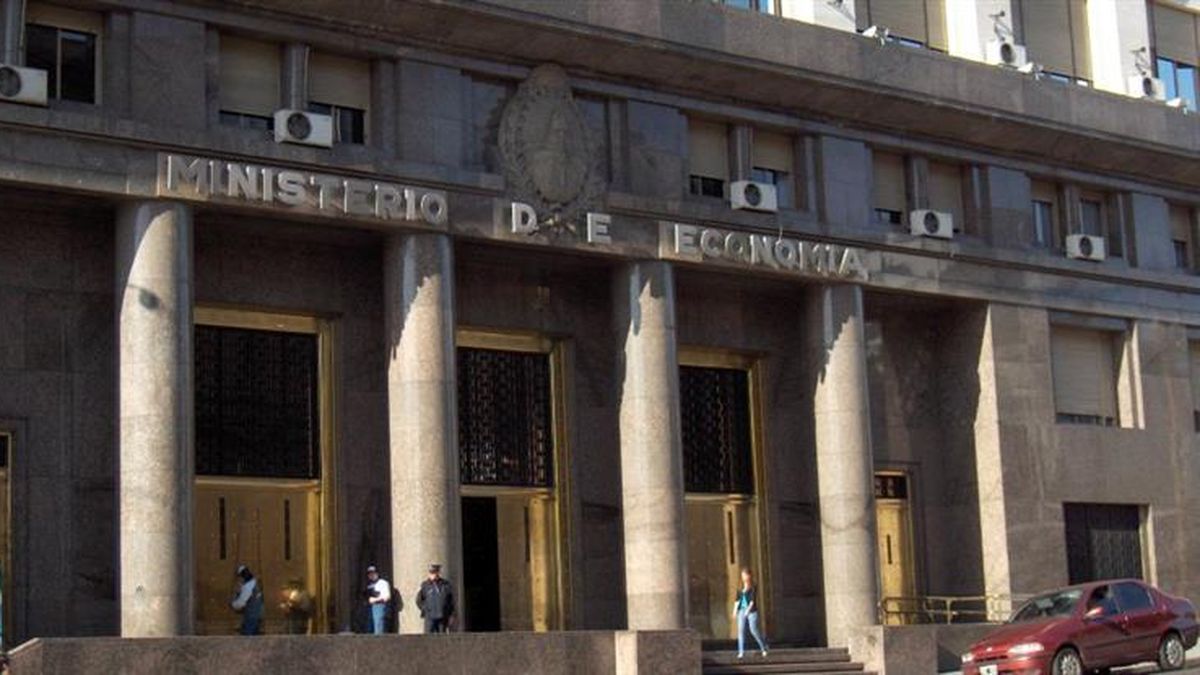Key 1: The need to provide coverage and stretch deadlines
But, beyond the debate, the economist from Equilibra, Lorenzo Sigaut Gravina, all this occurs in a context in which “in the second and third quarters there are massive debt maturities in pesos and the Government is having a hard time extending terms of facing the change of administration that will take place from 2024”. He points out that there is a fundamental liquidity problem and that is that there are many maturities in a short time.
He maintains that “it would not be desirable to generate a default in the local debt market”, because the Government has to preserve the debt market for the next administration in a context in which international debt is not viable.” Thus, in the middle of a presidential election process, what the government is looking for is to make an exchange for bonds that protect against inflation and tied to the official exchange rate.
The problem, as warned by the economist Federico Glustein, is that the indexation of maturities will exploit the next government, given that “a minimum 95% is expected for this year and, if there is a prospect of an anti-inflationary plan, it will be difficult for it to go to do with that surplus mass of pesos in 2024 and 2025”. This is the key to the controversy that is generated between the opposition and the ruling party at these times.
Key 2: the offer made by the Government
Ignacio Zorzoli, Finance Director of the Centro de Estudios Económicos Argentina XXI (CEEAXXI), points out along these lines that “the debt swap seeks to extend the maturity terms of short-term bills that end in March, April, May and June ”. In exchange for the delivery of these instruments at a discount or indexed rate or dual bonds with maturities in 2024 and 2025.
“If the exchange can be carried out successfully, this would have two relevant advantages for the government. In the first place, it could roll up the debt term and extend it over time and, what is more important, is that the maturities would be placed on dates after the elections”, Zorzoli maintains.
And, in this sense, the economist Federico Glustein explains that “the new bonds agreed with the banks have a staggered maturity between 2024 and 2025 -mostly for the second year-, 80% tied to inflation (CER) and 20 % dual with official exchange rate coverage. “The total amount of debt due in 2023 is $12.3 trillion,” he says.
On the other hand, it mentions that “more than half of the bonds to be exchanged are owned by public sectors, for which, although they are going to adhere in their entirety, a decree must be made for that to happen.”
Thus, he states that the key are the months from April to September, where a large part of the bulk of the maturities come together. “The issue is that only 20% of the private companies at least have to enter the exchange, therefore, it is not in danger at all,” he clarifies. But he acknowledges that it is good to see what level of acceptance it has to read expectations about the short-term future of the market, as well as to begin to have guidelines for the coming months and eventual calm in the monetary outlook.
Key 3: what will be the role of banks
As the Invecq economist, Juan Pablo Albornoz, maintains, it is still difficult to make a very detailed analysis since, “for now, only the announcement of the announcement of what they are going to announce is known.” And, in this line, Sigaut Gtravina assures that “the big question at this time is the issue of the put with the banks, if it is something new or something that was already in force in the BCRA regulations and points out that we will have to wait and see what Details will be given today.
As indicated by Glustein, Massa’s meeting with banks, finance companies and insurers is key to being able to save a virtual reprofiling. Albornoz comments that, since last week, there has already been a greater demand for securities maturing in 2024, which greatly compressed the yields (they rose in price and parity).
“The forward rates between similar instruments maturing in 2023 and 2024 had been indicating that some noise was expected by the market in the transition, but it would seem that they are beginning to be seen very slowly,” says Albornoz.
Thus, he considers that, quite possibly, this exchange was already discussed or speculated. The truth is that “when the potatoes burned, the exchanges were the exit route for the Treasury”, so it is to be expected that this time history can repeat itself in that sense. However, he clarifies that we still have to wait to see the fine print.
The issue is, according to Rodríguez, that the level of prices and rates that arise from the secondary market is still not a good initial situation (beyond the incipient improvement that part of the curve showed in pesos, including 2024 positions) to launch said exchange for a significant amount.
Hence, he considers that “perhaps the Government detects the need for the BCRA to act, guaranteeing to be the lender of last resort for holders who want to leave”, which would be a put. And it is that, Rodríguez observes that, today, “the back of the BCRA seems to be the only link to be able to make a voluntary exchange, given the current conditions of the debt market in pesos.”
Key 4: the risks of borrowing in pesos
In this sense, Camilo Tiscornia, director of CyT Asesores Económicos, believes that “the current government has contracted a lot of debt in pesos and that implies a very significant potential for inflation and devaluation risks.
This is because “it is a debt that must be paid in a very short time and that is the risk of this debt and that is why many say that it is ‘a bomb’.” He observes that what is behind it is a fundamental fiscal imbalance and that is a problem that Argentina has been dragging along for years.
“This debt problem generates many macroeconomic problems and the great dilemma is that the two factions of current politics do not agree on how to resolve the issue,” says Tiscornia.
Key 5: the political leg
In this sense, Tiscornia points out that a solution to the real problem behind the Argentine debt is that “Congress should agree to establish a State policy that would allow better acceptance of debt securities in the market and would make it more solid, sustainable and strong in the future”.
It happens that, as Rodríguez maintains, “the worst scenario is to play to break everything, whoever touches it.” And he explains that such a situation would involve the destruction of savings, which “are neither more nor less than excess liquidity invested in bonds that many companies, provinces and institutions later need to normally meet their obligations.”
Thus, he considers that the opposition and the ruling party (which have the greatest responsibility) should “mature and cooperate in discussing the best tools to accelerate a fiscal convergence scenario in order to make the debt market regain confidence and find a normal path.” to distribute the maturities of a debt that is manageable, but that is a short-term snowball, very dangerous in a year of electoral transition”.
Source: Ambito




